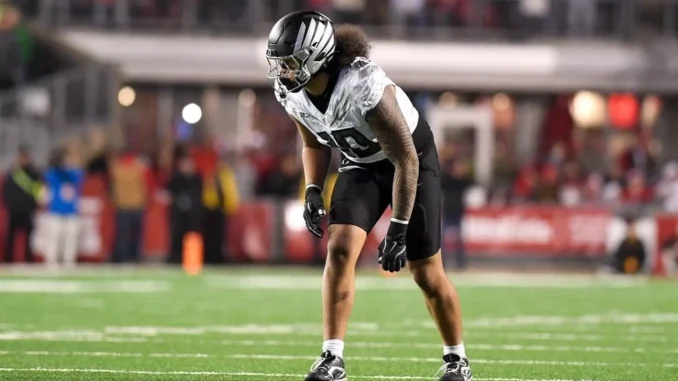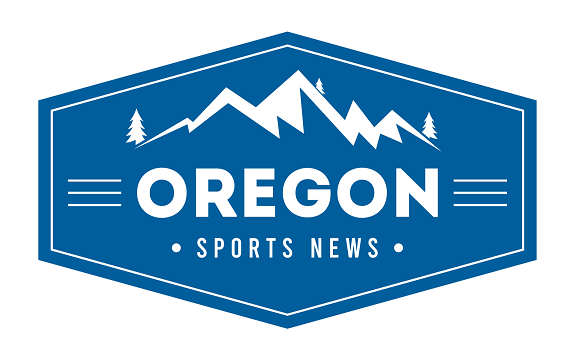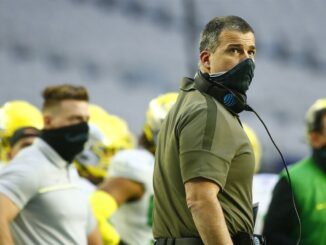
When Oregon head coach Dan Lanning stepped to the podium this offseason and said the Ducks were “doubling down” on defense, it wasn’t just coach-speak. It was a mission statement. As Oregon enters its second year in Big Ten territory in 2025, Lanning’s message revealed the deeper blueprint the program is leaning into—one shaped by the physicality, climate, and culture of its new conference.
This isn’t a pivot—it’s a sharpening of identity. Oregon has long been known for speed, flash, and innovation. But the Big Ten, with its snow-caked fields and trench warfare style, demands something grittier.
Lanning, a former Georgia defensive coordinator, knows what championship defenses look like. And in 2025, he doesn’t want Oregon to merely survive in the Big Ten—he wants them to own it.
Building the Backbone: Depth, Rotation, and Relentlessness
Oregon’s defensive front is no longer just fast—it’s deep, rugged, and built to wear opponents down. In a conference where games often stretch into the fourth quarter and hinge on 10-play drives, having a fresh and forceful defensive line isn’t a luxury—it’s essential.
Lanning has made defensive line depth a priority. The 2025 unit is younger, tougher, and more rotationally flexible. Headlining the group is Matayo Uiagalelei, now joined by 6’6”, 336-pound redshirt freshman Tionne Gray. A former Missouri commit, Gray has impressed in spring practices and is already in line for goal-line and short-yardage duties. If he keeps it up, his role could expand quickly.
Alongside them, second-year breakout candidate Ashton Porter adds explosive energy off the edge. Oregon now has a front capable of rotating through waves of pressure, adapting to tempo, and staying fresh late in games—exactly what the Big Ten demands.
Lanning isn’t just recruiting size and speed; he’s targeting motor, instincts, and versatility. In this league, edge rushers must drop into coverage. Tackles have to move laterally and handle double teams. Oregon’s personnel is built not just with athletes, but with solutions.
Secondary as Strategy: From Coverage to Command
If the defensive line is about pressure, the secondary is about poise and precision. Oregon is no longer chasing just rangy corners and ball-hawking safeties. They’re emphasizing communication, discipline, and alignment—the traits that win cold-weather games in front of 85,000 fans.
Kobe Savage, a seasoned transfer from Kansas State, brings leadership and maturity. Daylen Austin, once a high-profile recruit, is entering his second year and is expected to step into a bigger role.
But Oregon’s shift isn’t about individual stars—it’s about orchestration. Lanning and defensive coordinator Tosh Lupoi are building a unit that can disguise coverages, adapt to different offensive looks, and stay composed. In a league where you face Iowa’s power run one week and Penn State’s spread the next, defensive backs need to be both reactive and predictive.
Linebackers as the Link: Intelligence Meets Impact
The linebacker room might best reflect Oregon’s evolution. It’s the bridge between the defensive front and the secondary—the group responsible for adjusting alignments, anticipating play calls, and anchoring the defense in chaos.
With veteran Jeffrey Bassa off to the NFL, the Ducks turn to Devon Jackson, a rangy athlete who’s now showing a more refined understanding of reads and pursuit. This group isn’t just flying to the ball—they’re diagnosing, adjusting, and leading.
That’s by design. The Big Ten requires linebackers to shift gears quickly—handling Michigan’s bruising run game one Saturday, then responding to USC’s tempo the next. Lanning’s blueprint, shaped by stops under Kirby Smart and Glenn Schumann, is all about football IQ. Oregon’s 2025 linebackers aren’t just fast. They’re smart, too.
Culture Is the Scheme: Weatherproof Football and the Big Ten Test
There’s a reason Lanning said “double down.” It wasn’t just about signing new talent. It was about recalibrating the entire program’s mindset. Oregon doesn’t want to be the fastest team in the Big Ten—it wants to be the most prepared and most physical.
That shift is evident in the weight room, the film sessions, and the way they practice. Gone are finesse-first drills. Practices now mimic cold-weather tempo, tackle-heavy scrimmages, and sustained physical drives. They’re not just preparing for Eugene—they’re preparing for Ann Arbor, Madison, and State College.
And it’s not just Lanning saying this—the players feel it. Former leaders like Bassa and Bo Nix, along with rising voices like Austin Novosad, have spoken publicly about how the team’s culture has hardened. The focus is no longer on Pac-12 titles. That era is over. The goal is to walk into Michigan and expect to win—not hope to.
The Lanning Effect: Beyond the Playbook
Dan Lanning’s fingerprints are all over this evolution. In just a few seasons, he’s transformed Oregon from a flashy Pac-12 contender into a Big Ten-ready grinder. He hasn’t abandoned tempo or talent—but he’s fused it with grit, depth, and preparation.
What makes this “double down” approach so compelling is that it doesn’t reject Oregon’s identity. It builds on it. Lanning isn’t ditching speed—he’s reinforcing it with toughness. He’s not trading innovation for tradition—he’s blending both into something new.
And the players are bought in. Not because it’s catchy, but because it’s working. The Big Ten doesn’t reward branding. It rewards toughness, discipline, and execution when the weather’s bad and the margins are thin.
Conclusion
Oregon’s “double down” isn’t a slogan. It’s a strategy. A commitment to defense, discipline, and adaptability. If the Ducks succeed in 2025, it won’t be because they mimicked the Big Ten—it’ll be because they became a version of themselves that thrives in it.
A team that can win 17–14 in the snow. That can grind out fourth-quarter stops. That’s built to last—and built to win.



